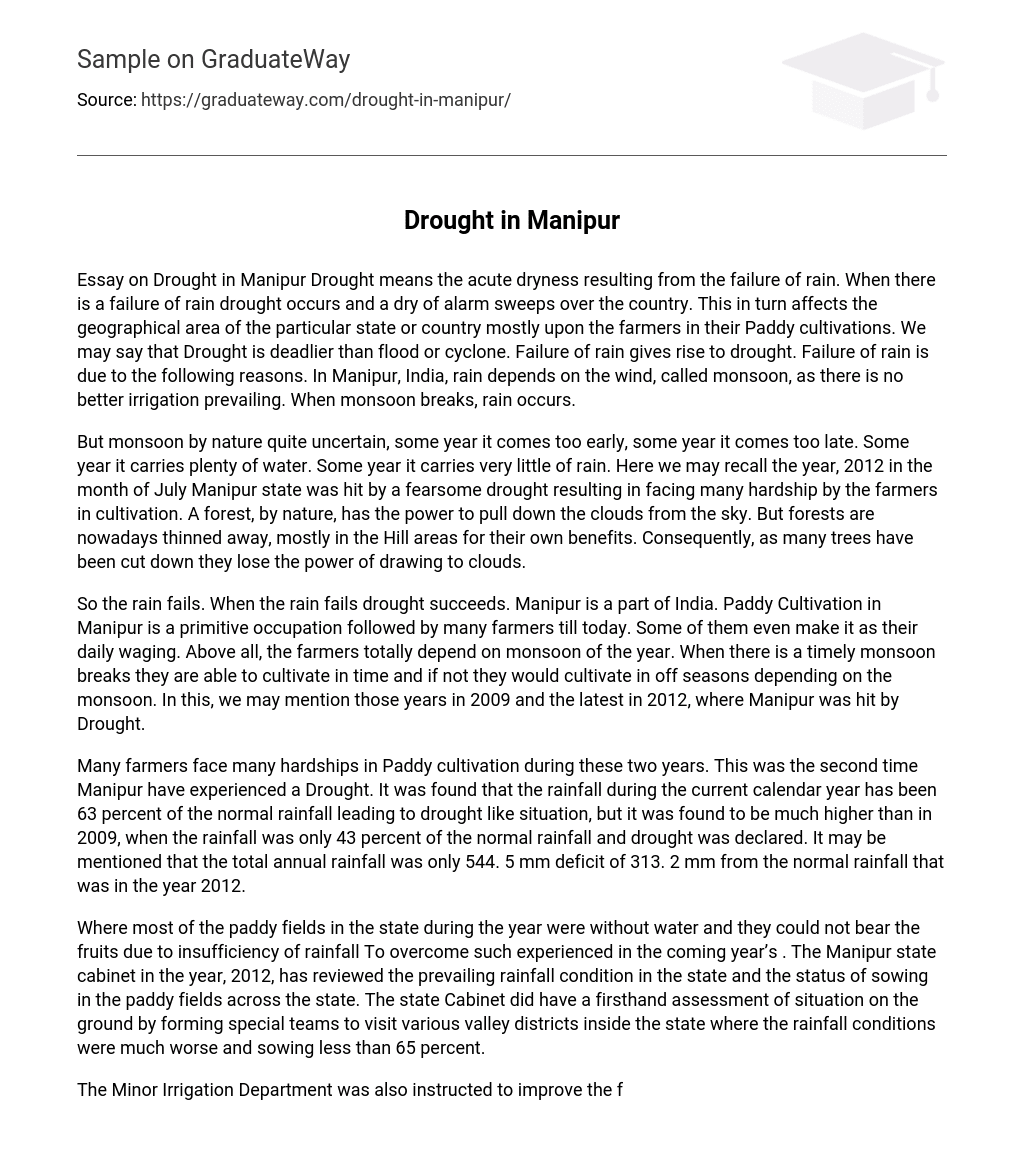Drought is the result of insufficient rainfall, leading to severe dryness. Its impact can be widespread, affecting entire countries or states and posing a significant threat to farmers who depend on rain for their Paddy crops. Unlike floods or cyclones, drought is considered more perilous. The absence of adequate irrigation systems in Manipur, India, where rainfall relies heavily on monsoons, contributes to the lack of precipitation.
The monsoon season is unpredictable, with the possibility of arriving too early or too late and varying amounts of rainfall each year. This inconsistency greatly affects agricultural communities, as demonstrated by the severe drought in Manipur state in July 2012. Forests have traditionally played a vital role in attracting rainfall by drawing clouds from the sky. However, deforestation for personal gain, especially in hilly areas, has resulted in the reduction of trees and their ability to attract clouds.
When the rain fails, drought occurs in Manipur, India. Paddy Cultivation in Manipur is an ancient occupation that many farmers still practice today and rely on for their daily wages. These farmers are entirely dependent on the monsoon for their crops. If the monsoon arrives on time, they can cultivate their crops timely. However, if the monsoon is delayed, they have to cultivate during off seasons, depending on the monsoon. Notably, Manipur suffered severe drought in 2009 and 2012.
Many farmers in Manipur have faced difficulties in Paddy cultivation for the past two years due to drought. The current calendar year has experienced a rainfall of only 63 percent of the normal amount, leading to a drought-like situation. However, this is still higher than the rainfall in 2009, when it was just 43 percent of the normal amount and declared as a drought. It is important to note that the total annual rainfall in 2012 was 544.5 mm, which was 313.2 mm below the normal rainfall.
In 2012, the Manipur state cabinet conducted a study to address the issue of insufficient rainfall affecting paddy fields. The majority of the fields faced water scarcity and failed to produce crops that year. The cabinet assessed rainfall conditions and sowing statuses across the state, forming dedicated teams to visit valley districts with low rainfall and less than 65 percent sowing.
The Minor Irrigation Department was instructed to improve the functioning of all River Lift Irrigation Schemes in order to enhance the irrigation situation in the state. The department should take proactive measures to prevent drought, although it is not entirely avoidable. Ensuring improvement in the functioning of these schemes is one way to make provisions against the force of drought. The responsible department for this would be The Minor Irrigation Department.
Finally, it is crucial to halt the cutting down of trees as they are essential for maintaining the precipitation cycle. Trees also provide us with a significant supply of food and fodder, and enable us to create numerous water pipes. Additionally, farmers can cultivate water-efficient crops. Given the advancements in science, it is now feasible to create artificial rain to combat drought in Manipur (ima-Sanaleibak), ensuring the preservation of our magnificent state.





